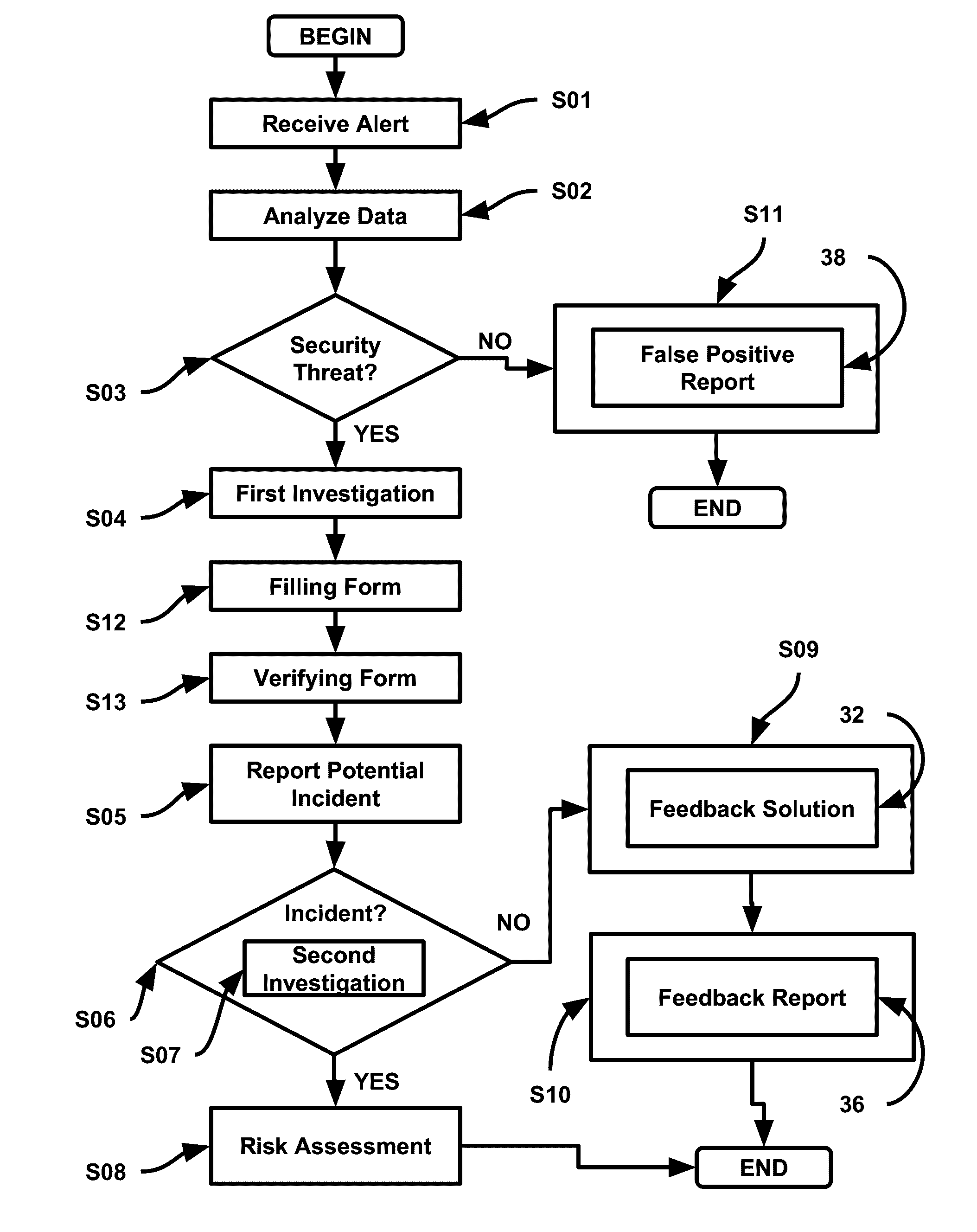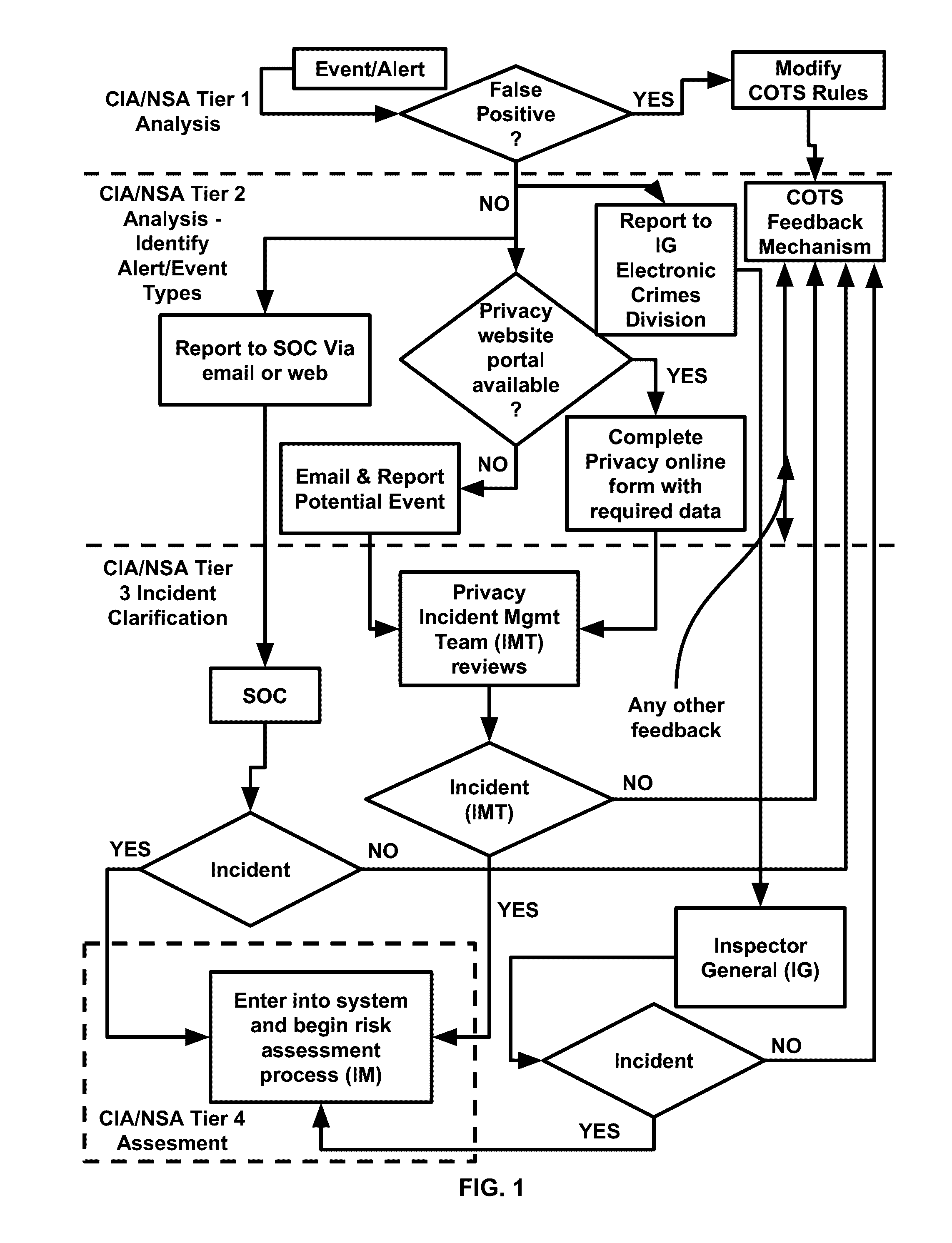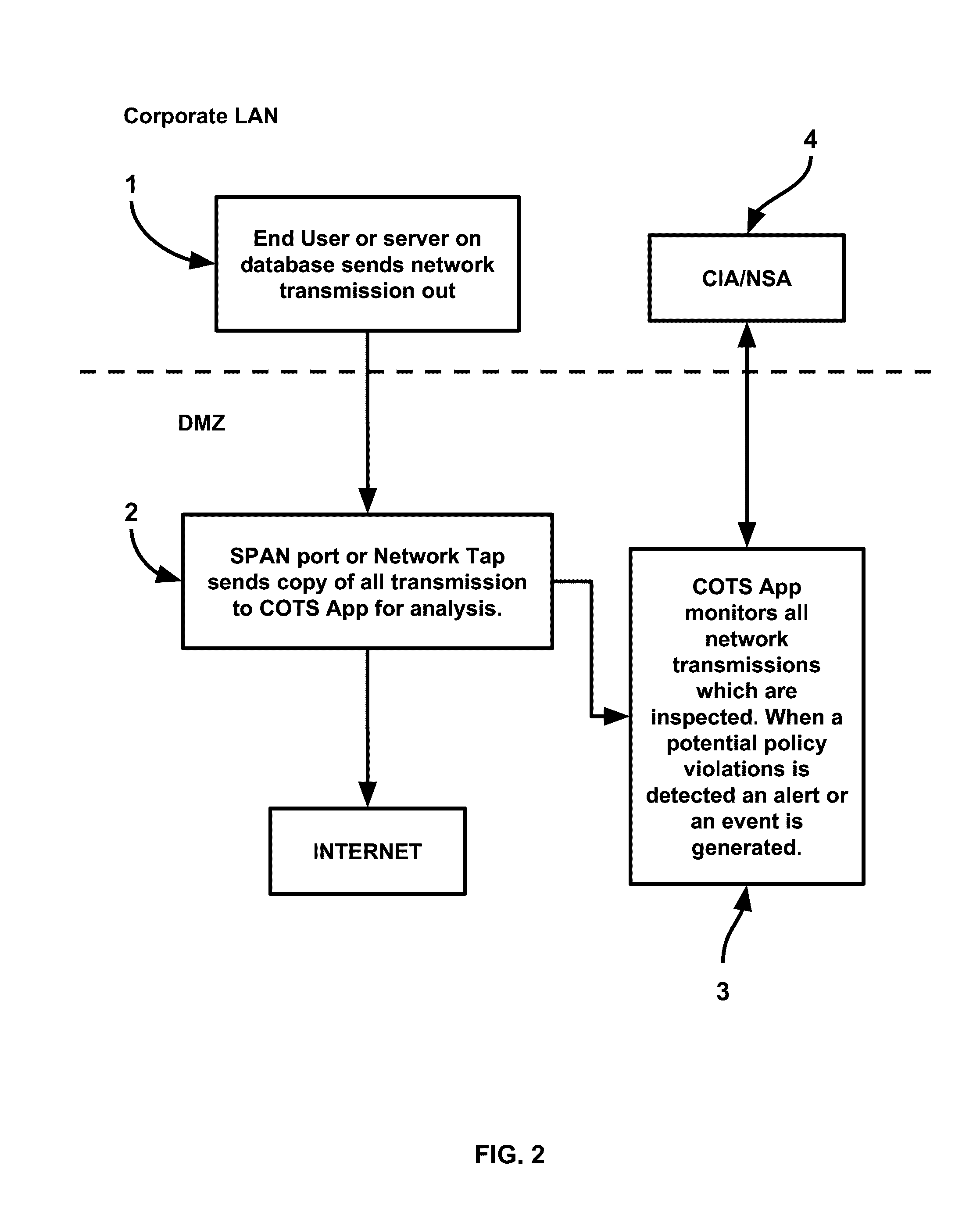Method and device for managing security in a computer network
a computer network and security alert technology, applied in the direction of navigation instruments, machines learning, instruments, etc., can solve the problems of overwhelming volume, disastrous consequences, and organizations that have difficulty in managing and acting on security alerts
- Summary
- Abstract
- Description
- Claims
- Application Information
AI Technical Summary
Benefits of technology
Problems solved by technology
Method used
Image
Examples
Embodiment Construction
[0111]A false positive is any normal or expected behavior that is identified as anomalous or malicious. False positives may happen because (1) some legitimate applications do not strictly follow IETF RFCs, and signatures written to the RFC may trigger when such applications run; (2) an application not seen in the training stage of an anomaly detection system will likely trigger an alert when the application attempts to run; (3) a signature can be written too broadly and thus include both legitimate and illegitimate traffic; (4) anomalous behavior in one area of an organization may be acceptable while highly suspect in another. As an example, NBT traffic is normal in a Windows LAN environment but not generally expected on the Internet. This is not an exhaustive list but the most common places that IDS, Firewalls, DLP and other cybersecurity applications / systems can have false positives. False positives are one of the largest problems facing someone implementing a cybersecurity system...
PUM
 Login to View More
Login to View More Abstract
Description
Claims
Application Information
 Login to View More
Login to View More - R&D
- Intellectual Property
- Life Sciences
- Materials
- Tech Scout
- Unparalleled Data Quality
- Higher Quality Content
- 60% Fewer Hallucinations
Browse by: Latest US Patents, China's latest patents, Technical Efficacy Thesaurus, Application Domain, Technology Topic, Popular Technical Reports.
© 2025 PatSnap. All rights reserved.Legal|Privacy policy|Modern Slavery Act Transparency Statement|Sitemap|About US| Contact US: help@patsnap.com



